A group of historians is busy compiling memories, photos, anecdotes etc. about the previous Hutton conferences. If you have some material you want to share, please contact us !

Thirty-six years of Hutton Symposia
by J.-F. Moyen & J.D. Clemens, with kind contributions by M. Brown, B. Barbarin, P. Piccoli, V. Janoušek and others…
The next Hutton Symposium, in Baveno, will be the tenth in the series. Since the first meeting in 1987, the granite community has changed a lot – or perhaps not. With the help of several colleagues, we have compiled a history of the Symposia: what, when and where of course, but also how they contributed to shape the granite science – and the collective memory of the granite community.
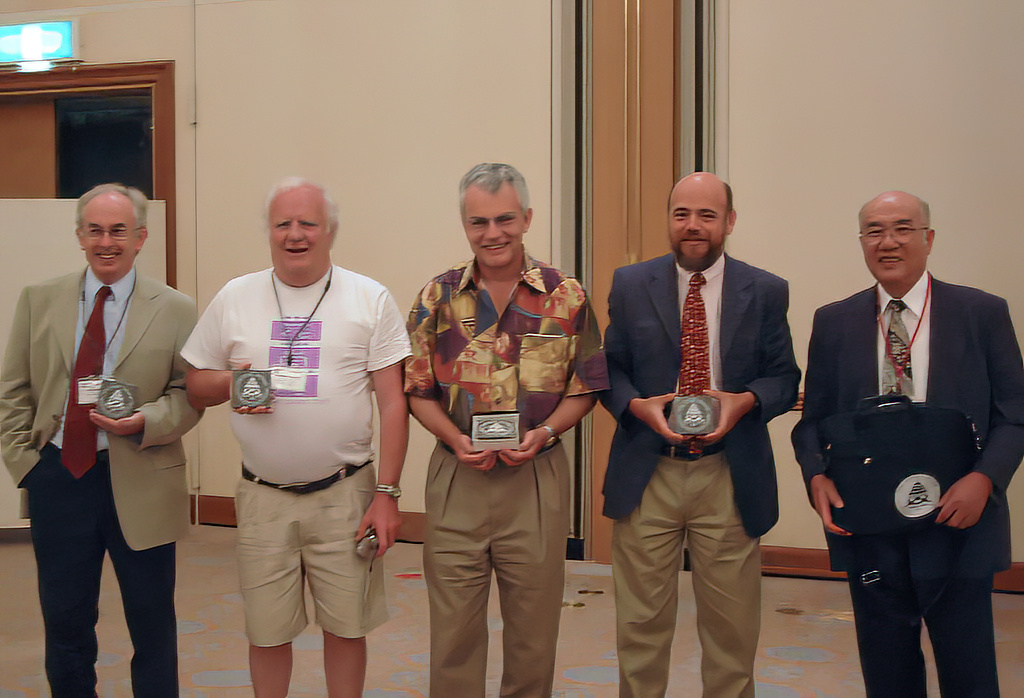
1987, Edinburgh (Scotland): the Hutton Bicentenary Meeting

The First Hutton Symposium was jointly organized in Edinburgh in 1987, by The Royal Society of Edinburgh (RSE) and the Royal Society of London, at Heriot-Watt University, from 14 to 16 September. Of course, it was not the “first” Hutton symposium then – merely the celebration of the bicentenary of the work of James Hutton (1726 to 1797), the rather colourful and multi-talented Scottish father of modern geology, and author of The Theory of the Earth, published in 1788. Based on field observations, Hutton was the first to express the view that granite had solidified from something fluid that could invade surrounding rocks, i.e., what we would now call an intrusive magma.
Prof. J.D. Clemens (ret., Stellenbosch University) shares memories of this first event:

“In 1987, along with many others, across the globe, who were working vaguely on the subject of granites, I came to hear of a symposium on the subject that would be held in Edinburgh. In the event, more than 300 geoscientists from 21 different countries gathered to hear a wide variety of talks and to argue various points of philosophy and observation. All participants received a reproduction of the extended abstract of Hutton’s address to the RSE in 1785 At one point, the late Wally Pitcher (then retired from Liverpool University) got to his feet to tell the assembly that there were several unidentified young people whom he thought would end up leading the granite research community, and noted that all were present in the audience that day. Perhaps this gives some idea of the importance of this first Hutton Symposium in advertising and energising granite science. From my perspective, some of the most remarkable talks were given by people from one of the ancient universities in the UK, with each featuring cartoons of elongate granitic bodies rising through the lithosphere. These were inevitably coloured red to orange and one speaker referred to them as “the carrots”. When the reality of this sort of graphic was queried, the questioner was ridiculed by a trans-Atlantic participant who had mathematically modelled such things. And there was a temporary end to that, though the debate continued into subsequent Hutton meetings. There were posters of course, and many fascinating new aspects of the granite problems were highlighted. When I look back on the topics covered at this meeting, they are still things that are keenly researched and debated to the present day. Indeed, very similar observations were made by Wally Pitcher in this first Hutton Symposium! He also noted that we are all bound by our training and experiences; “We can’t escape our history.”, he said. Though the techniques involved in the investigations have become far more sophisticated, many of the old granite problems simply refuse to go away. So, there is plenty for current and up-coming granite workers to get their teeth into.

Professor Wally Pitcher led two wonderful field trips to the Donegal batholith in Ireland. We crossed on the ferry and landed in Northern Ireland, to witness armed military patrols and heavily fortified border posts, searches of our coach and finally the peace of crossing into the Republic. The two trips were not quite mirror images of each other because it seemed that the pre-meeting version involved a higher proportion of senior researchers in the field. There were also occurrences on this first trip that were, luckily, not repeated during the post-meeting version. Specifically, near a cattle enclosure at one locality, there was a very deep and dangerous bog. One senior stable-isotope geologist got mired in this, with one leg completely buried and the other doubled up beneath him. Unable to move, a crane was brought in to save the day and the gentleman was extricated safely, minus one gumboot. Or so the story went, because I only participated in the post-meeting trip and the foregoing is hearsay! What I do remember was the patient and careful way in which Wally guided people through the field relations so that they could see clearly the contact and internal features of the various plutons and their wall rocks. The incidents on the post-meeting trip mostly seemed to revolve around food (and drink) and the qualities and quantities thereof. These stories, however amusing, should not be recounted here.
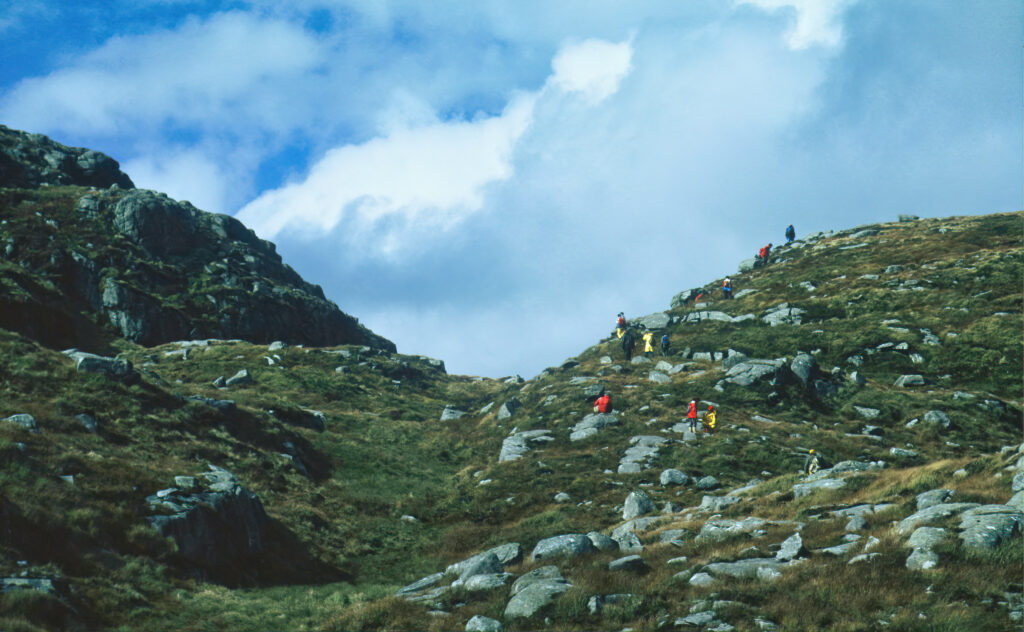
On the geological front, we also saw many very strange things. One is an area in which the country rock Dalradian schist had been broken into irregular and angular blocks (on a scale of centimetres to metres) and put back together like a jigsaw, with all the pieces fitting perfectly but all with the layering and schistosity completely misorientated with respect to each other. Another is a vertical pipe with rounded pebbles of a nearby quartzite bed set in a granophyric matrix. The pebbles had evidently been rattled around in this pipe and rounded in a magmatic fluid before being ‘cemented’ by granitic melt. The last strange thing was in an orbicular facies of granite in the Rosses pluton. I noticed that there were odd rare orbicules exposed in a granite face near this locality, but I don’t think many saw those. Instead, we all stood on the cliff top and looked down upon a house-sized block of orbicular granite on the ‘beach’. Now orbicules and orbicular rocks are strange enough, but this block was extra special. The fist-sized orbicules were clumped close together, sometimes evidently having deformed each other, and they had normal granitic rock in the interstices. Nothing unusual there, but how about the fact that all these small orbicules were enclosed within a single gigantic orbicule with the same thickness and internal layering as the small ones – like marbles in a paper bag?
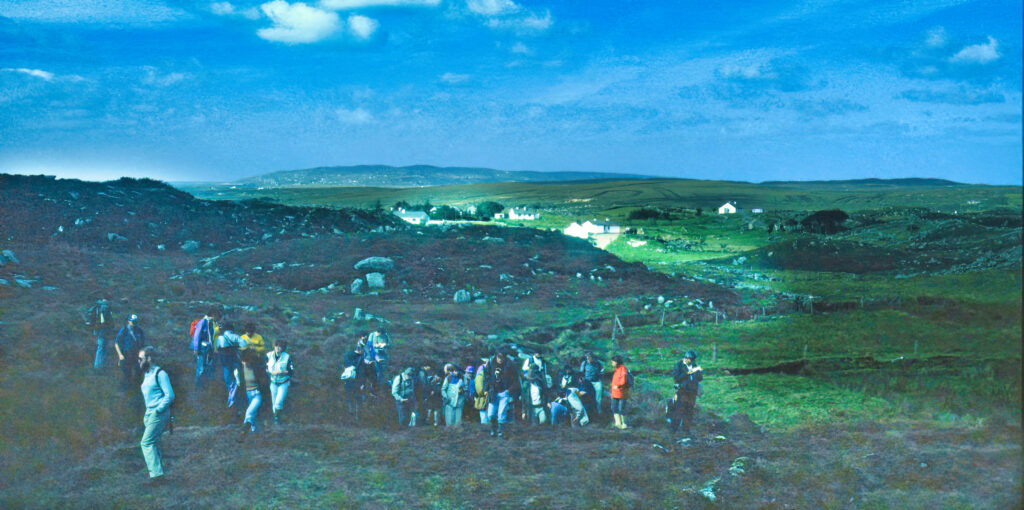
A total of 19 papers from this meeting were published in a 1988 volume of the then Transactions of the Royal Society of Edinburgh (Earth Sciences). This became the traditional outlet for papers derived from subsequent Hutton Symposia, until the 2007 meeting voted to change journals. Speaking of voting, the Hutton Symposia were never subsumed by any formal society. They continue to be independently organised by local groups of interested scientists, in various countries. In the first meeting the assembly expressed the opinion that a meeting ought to take place every 4 years, and so it has been. Assembled participants also usually exercise their democratic responsibility by voting for where the next Hutton will take place and by whom it will be organised. These are proud traditions that I personally hope will continue for as long as the granite community decides that Hutton symposia should be held. On a sad note, a frighteningly large proportion of the senior speakers at this first Hutton Symposium are no longer with us but I, for one, feel privileged to have met and learned from them all. Long Live the Hutton Symposia.”
1991: The Second Hutton Symposium in Canberra, Australia
As voted by the participants of the Edinburgh meeting, the second Hutton Symposium happened on the 23rd to 28th September 1991, at the Australian National University in Canberra, Australia, chaired by Bruce Chappell. Some 200 geologists attended the meeting. As could be expected, the differences between I-type and S-type granites featured centrally in the meeting, including robust debates – still not settled to this day – on the very existence of I-types, or rather on the relevance of this classification. The year 1991 also marked the beginning of the isotopic-studies era. The SHRIMP, then a brand-new instrumental development, had recently been installed in Canberra. For the first time but not the last, geochronology and isotope studies featured centrally in the discussions on the origin and evolution of granites.
A vivid account of the pre-conference field trip, which took the participants across the Lachlan Fold Belt, is given in the preface of the Special Issue that was published following the conference (Trans. Roy. Soc. Edinburgh, vol. 83, 1992), by P.E. Brown:
“Immediately prior to the symposium, Bruce Chappell, Allan White and Ian Williams led a week long field excursion to study the granites of the Lachlan Fold Belt. This excursion took a transverse section through the fold belt, starting in Melbourne and finishing in Canberra and was made particularly memorable by a blizzard in the Snowy Mountains, which made the crossing of Dead Horse Gap an anxious time for the leaders. Those participating received a definitive and beautifully produced guide book written by the leaders and supplemented en route by voluminous isotopic data, much of which served to confirm the important role of zircon studies to petrogenetic interpretations. There is a vast amount of integrated field, petrographic, chemical and isotopic information on the Lachlan Fold Belt and those people attending the excursion were much indebted to the leaders for their skilful presentation of its complexities. Debate on the outcrops was lively and frequently stimulated by the invaluable observations of W. S. Pitcher. Edge was added by the not infrequent polarisation of viewpoints into Aussie versus Poms, though reference to the Lachlan boulder belt was a purely British (Pom) postgraduate allusion to an unaccustomed style of outcrop.
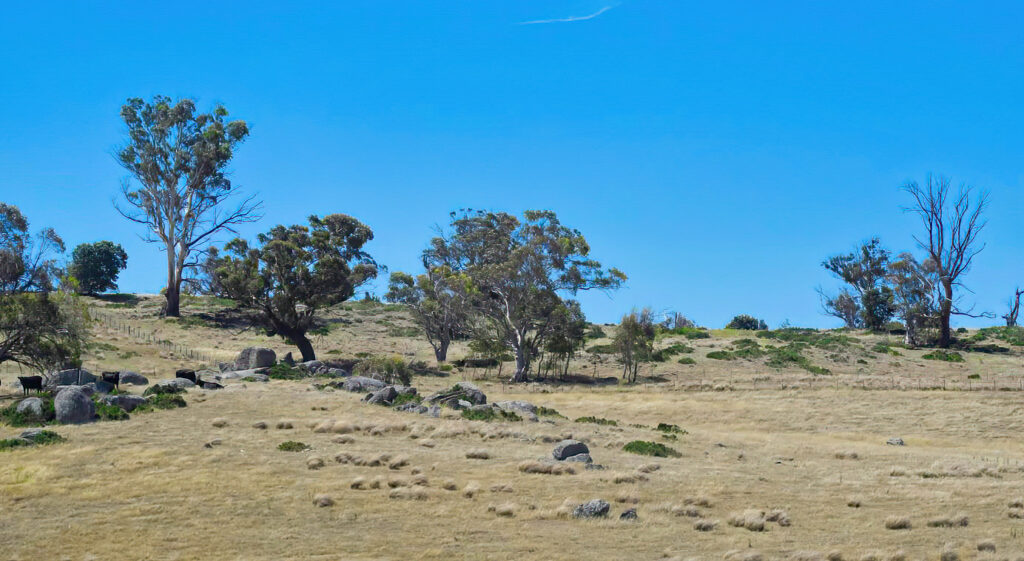
A mid-symposium excursion to examine enclaves in the Cowra granodiorite was led by D. Wyborn, A. J. R. White and B. Chappell and proved to be a delightful social occasion, as well as scientifically stimulating.”

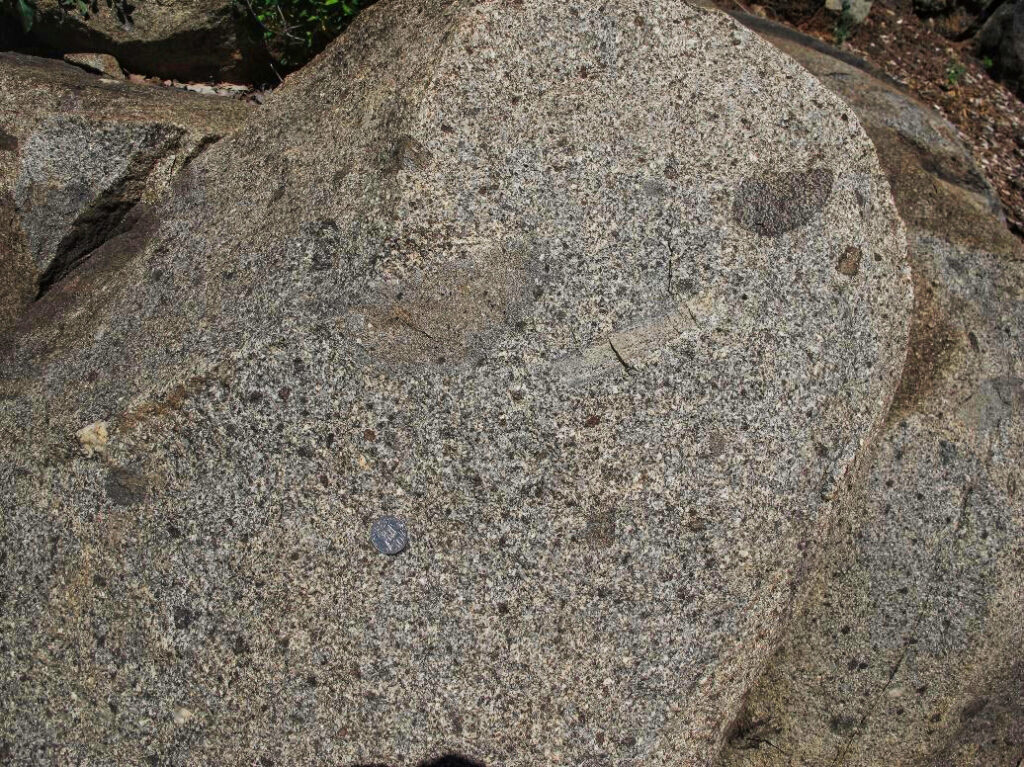
1995: The Third Hutton Symposium in College Park, Maryland, U.S.A.
At the end of the Canberra meeting, the attendees decided that the next Hutton Symposium would be organized by the University of Maryland at College Park MD, USA. Mike Brown was the main organizer of the 1995 meeting, from the 17th August to the 2nd of September. The previous meeting highlighted the need for discussion time and forums among the members of the granite community. Prior to the meeting, the development of the Internet in these years allowed D. Barrie Clarke at Dalhousie University to set up a mailing list (GRANITE-RESEARCH@LISTSERV.UMD.EDU) that allowed (and still allows!) discussions and debates. The organizers also (un?)wisely organized evening discussion sessions (“current debates and future research directions”), that were lively indeed – all participants still remember two well-known scientists, who shall remain anonymous, yelling at each other across the room and shaking their fists! As indicated above, the granite-research list still operates, and has also been the site of spirited discussions, though it is rather more sedate these days.
The larger number of participants meant that most of the contributions were in poster form, and ample space was given to posters – still a feature of the Hutton meetings. In Maryland, the mornings were devoted to oral presentations and the afternoons to posters. The organizers also made the conscious choice to enrol senior scientists as chair people, and allocate oral slots mostly or only to early- and mid-career researchers. The fact that many of them are now the “tribal elders” of our community attests to the perspicacity of the Maryland organizers in identifying future leaders.
Analytical developments, and growing amounts of geochemical data were of course a central feature of the meeting. In retrospect, it is perhaps best remembered for being the heyday of granite emplacement studies, with the clear articulation of the problem in terms of source/extraction/transfer/emplacement, and the final(?) demise of the “carrots” and of the “room problem”. The shapes and emplacement mechanisms of granite plutons, the role of deformation, etc. were clearly established then – and have not been much revisited since, it must be added.
1999: The Fourth Hutton Symposium in Clermont-Ferrand, France
In 1999, I (JF Moyen) was finishing my PhD in Clermont-Ferrand. Bernard Barbarin had recently moved there. He told me that he was organizing the next Hutton Symposium (from the 20th to the 25th of September), and that all PhD students in the department would be enrolled to help with logistics, slides (this was before PowerPoint!), driving people from and to the train station and so on. It was the first time I had heard about the Hutton Symposium – and it was great. Not only did I get to hear a number of excellent talks (for free!) but, in my capacity as Driver Extraordinary, I was fortunate enough to be able to engage, on a 1 to 1 basis with quite a few people who were just names (big names!) to me until then. Many of them became colleagues, co-authors and even friends in subsequent years. I had a poster, too, and got questions by, well, all my reference list. What a week for a young granitologist…
By then, the granite community had fully taken onboard plate tectonics; to be fair, it was already there in Pitcher’s paper in 1987 (Geol. Rundsch. 76(1): 51-79). A session was dedicated to “granites and geodynamic settings”, and for the first time it included discussion on the differences between recent and ancient granites: was this the first time the three letters “TTG” were heard in a Hutton Symposium? The mantle, and differentiation processes were completely absent from this edition, although mixing featured prominently. On the other hand, partial melting processes and melt extraction were central topics.
As before, a large space was devoted to posters and discussions. For the first time, the symposium (still with an attendance of around 200) was organized into thematic sessions, each with its chairperson, speakers and posters. The French granite community was heavily involved, with most of its prominent members chairing one of the themes. There was also a large choice of field trips (something that was going to remain a feature of subsequent Huttons), exploring the diverse Variscan granites of France and nearby. Another innovation was the mid-conference excursion, offered to all participants, to the Cenozoic volcanoes overlooking Clermont.

Years later, participants to the Fourth Hutton still have fond memories of the social activities. Five-course lunches were included in the registration for all participants, and the conference dinner was held in the medieval castle of Saint-Saturnin, a truly memorable experience…
2003: The Fifth Hutton Symposium in Toyohashi, Japan
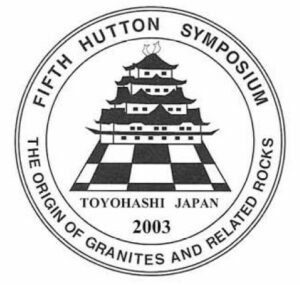
The Fifth Hutton Symposium organized by a team chaired by prof. Shunso Ishihara took place in Toyohashi, a busy automobile-producing city of the Aichi Prefecture in southern Japan, on September 2–6, 2003. The total number of attendees, predominantly from Japan, Korea, China and other Asian countries, was 205, of which 50 were students. In total, 64 talks were presented, including three invited ones in the opening session (S. Ishihara, J. Blundy, B. Chappell). Several themes were particularly strong at Hutton V, including the importance of the UHT metamorphism, partial melting processes and melt segregation in the lower crust, magma chamber processes and volcanic–plutonic connection. This was the first, and so far the only, Hutton meeting to be held in an active continental arc, and this was also reflected by the wealth of contributions on the juvenile granitoids in subduction settings. Separate sessions were dedicated also to the behaviour of metals + volatiles and metallogenesis in relation of economic deposits to distinct granitoid series.
As usual, the rich programme included numerous excursions of variable length. The three one-day mid-conference ones led to late Cretaceous Ryoke metamorphic rocks and granitoids, ilmenite-series granitoids E of Toyohashi and San-you high-level granitoids and rhyolites at Lake Biwa. The five pre-/post-conference excursions dealt with the Quaternary and Pliocene granitoids of the Northern Japanese Alps, Cretaceous metamorphic and magmatic rocks of the Seto Inland Sea region, Miocene granites of the Hishikari gold deposit (Kyushu), and island-arc crustal section in the Hidaka metamorphic belt (Hokkaido).
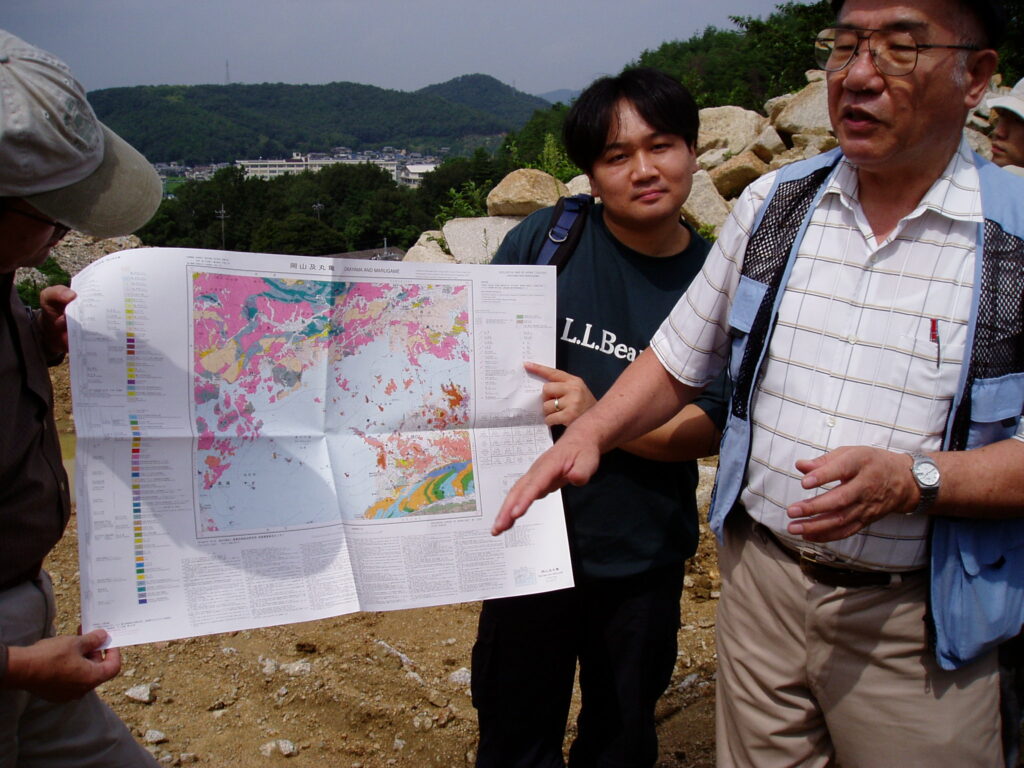
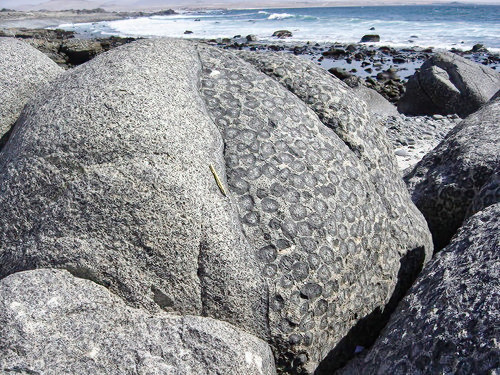
Of particular interest, at least to us from faraway Europe, was the social programme (V. Janoušek writes). Besides the already impressive Japanese drummers, I have particularly vivid memories of the violent hand-held fireworks using a bamboo cannon (called tezutsu hanabi). Fearing of my life among the falling sparks, I swiftly remembered my cold-war military training, and all the sudden have found myself watching the nearby spectacle lying flat on my belly ;-). Joking aside, we have all been impressed by the ancient Japanese culture, food and hospitality; it was a great meeting in a great series.
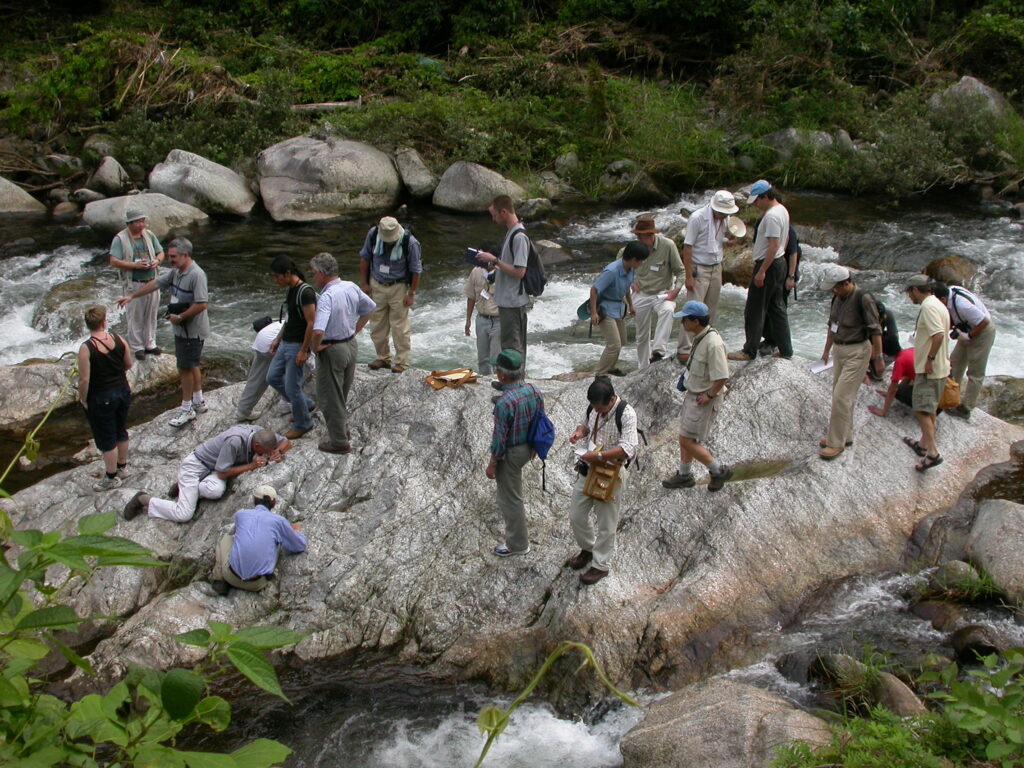
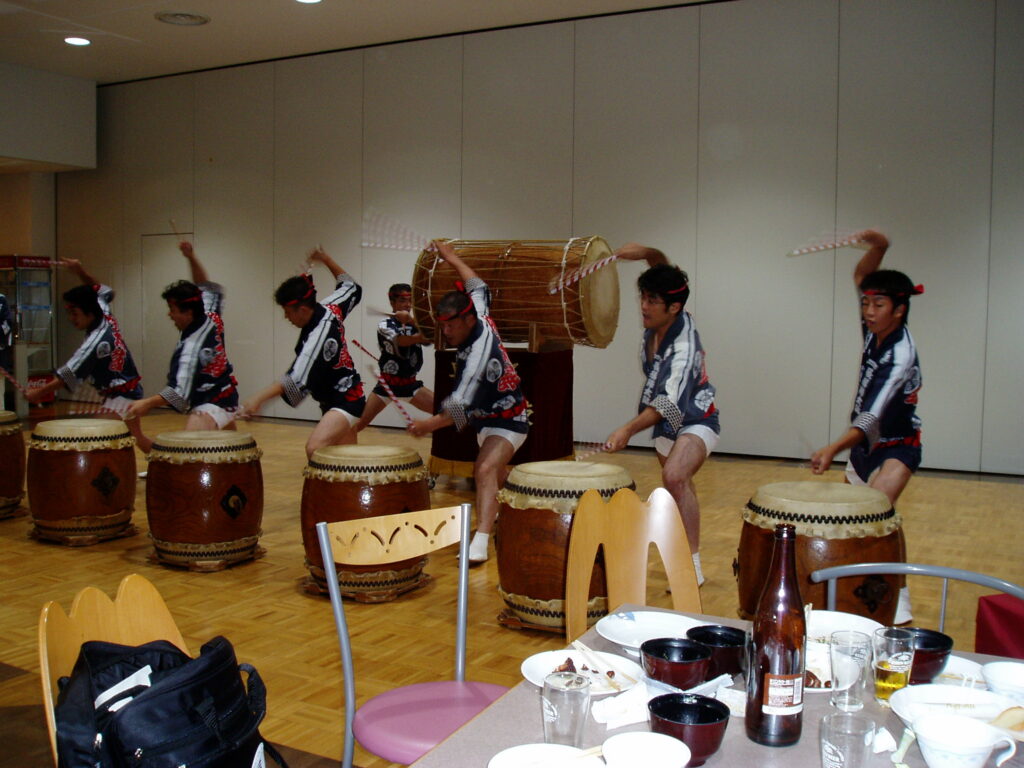
2007: The Sixth Hutton Symposium in Stellenbosch, South Africa
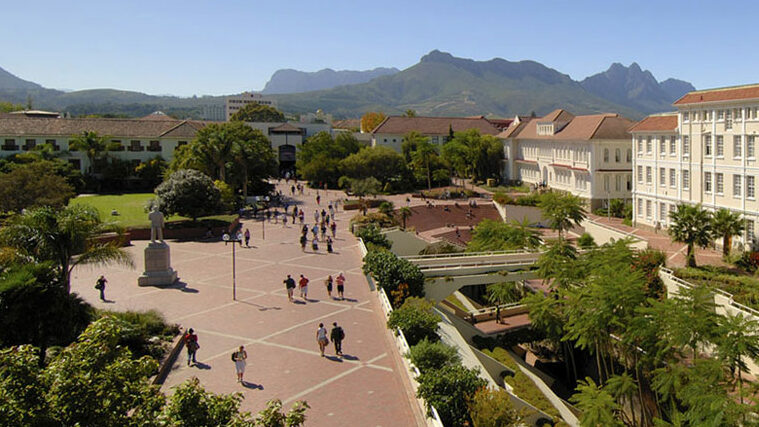

And then the Hutton went to Africa. In retrospect, it was probably too far from the rest of the world to attract a large audience – at around 150 participants, the Stellenbosch Hutton was the smallest of all. John Clemens had recently relocated to Stellenbosch and was the chief organizer of a winter meeting (2nd to 6th of July: remember, it is the southern hemisphere!). It included what was by then the signature feature of Hutton Symposia: a large space devoted to posters and discussions, the pre-and post-conference field trips as well as the mid-conference excursion (this one in Sea Point in Cape Town, where a famous intrusive contact had first been described by Darwin), and the conference dinner (in a wine estate near Stellenbosch).
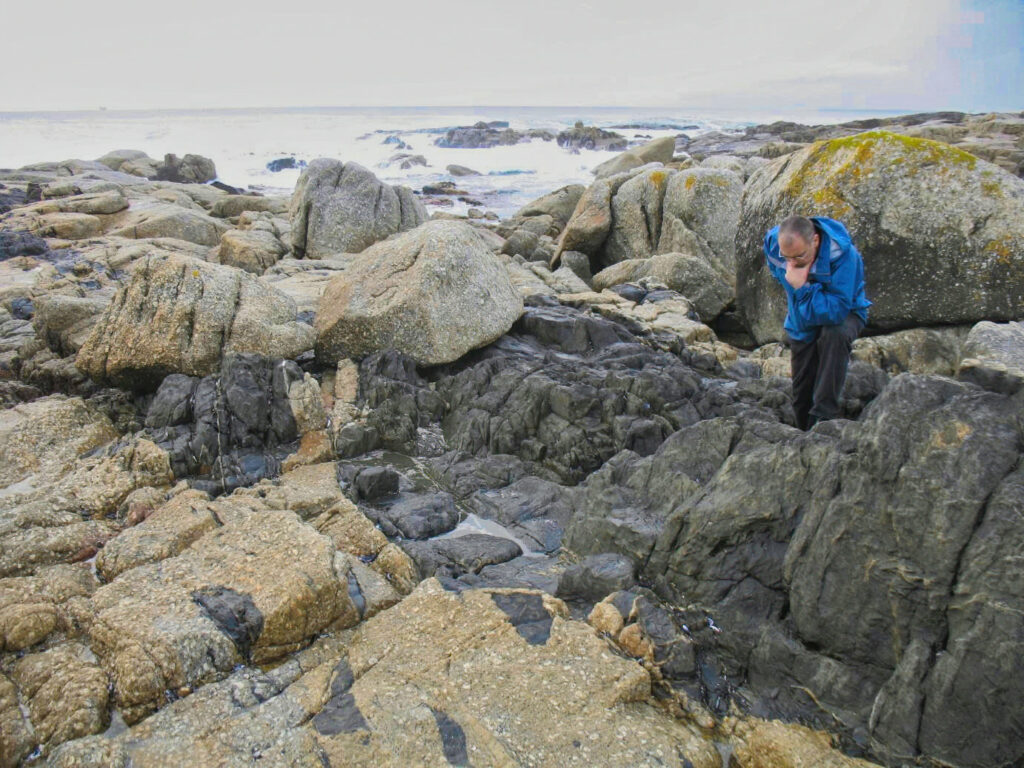
The innovation of this year, however, was the move to something closer to a workshop format: only the keynote speakers had oral slots, and they were long (45 min.). The rest of the presentations were in poster form, with the exception of young researchers who each got a short oral slot as well. Keynote speakers were established researchers, mostly in mid-career. The idea was to give them an opportunity for in-depth discussion of a topic, setting the stage for future discussions around the posters. This concept stayed during the following meetings, and was both loved (because it allowed participants to really get an overview of the current state of the art) and hated (because the majority of attendees did not get a talk). Three of the keynotes were given by female researchers – still far from parity but a definitive improvement over the exclusively masculine complement at previous meetings. Unfortunately, this somewhat lack-lustre performance remains the Hutton meeting’s best effort to date on the front of gender equity..
Stellenbosch is a small town. This meant that practically everybody ended up in the same venues (i.e., pubs) in the evenings, and a lot of scientific(?) discussions occurred in these. In that sense, the meeting was certainly a success.
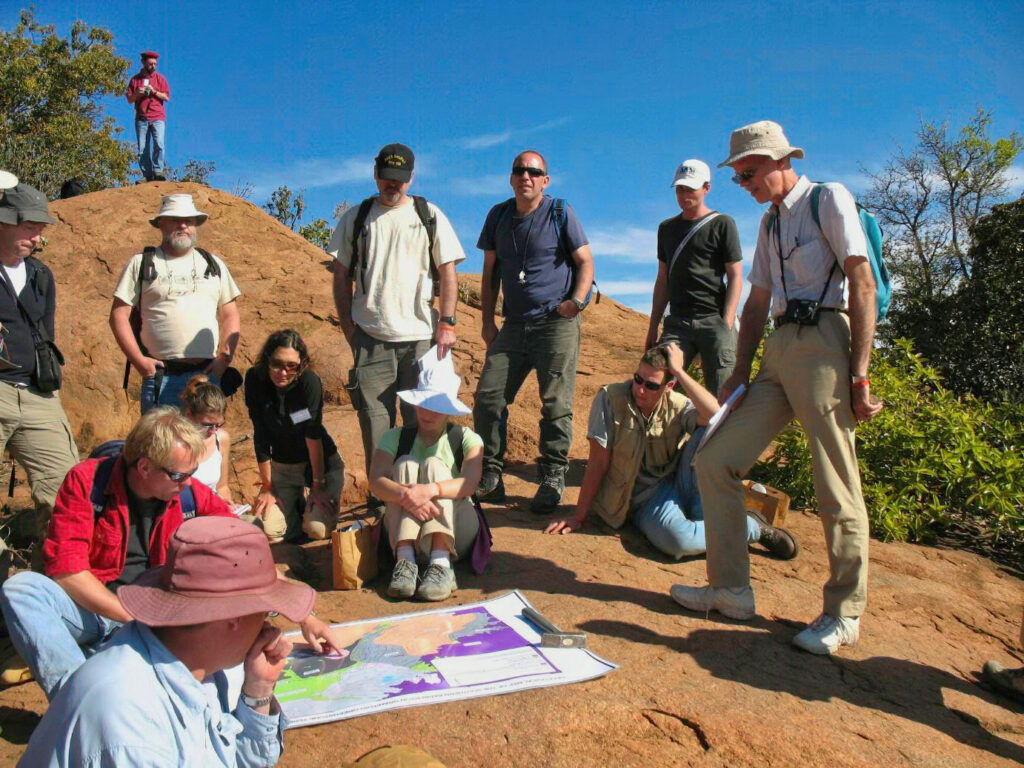
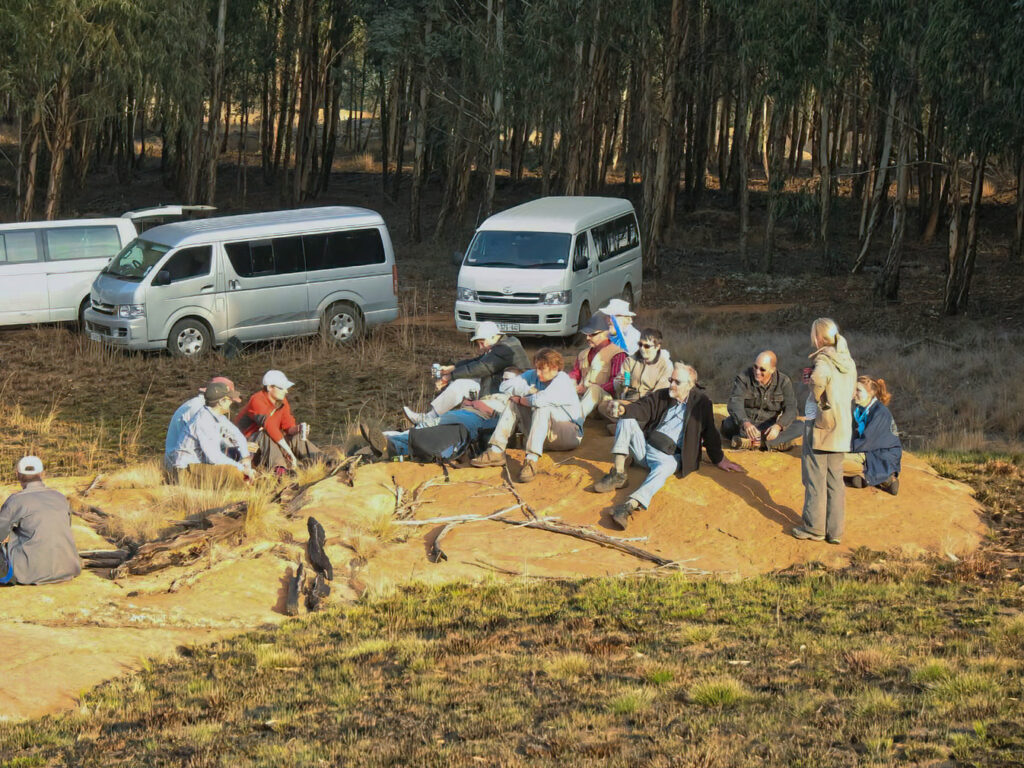
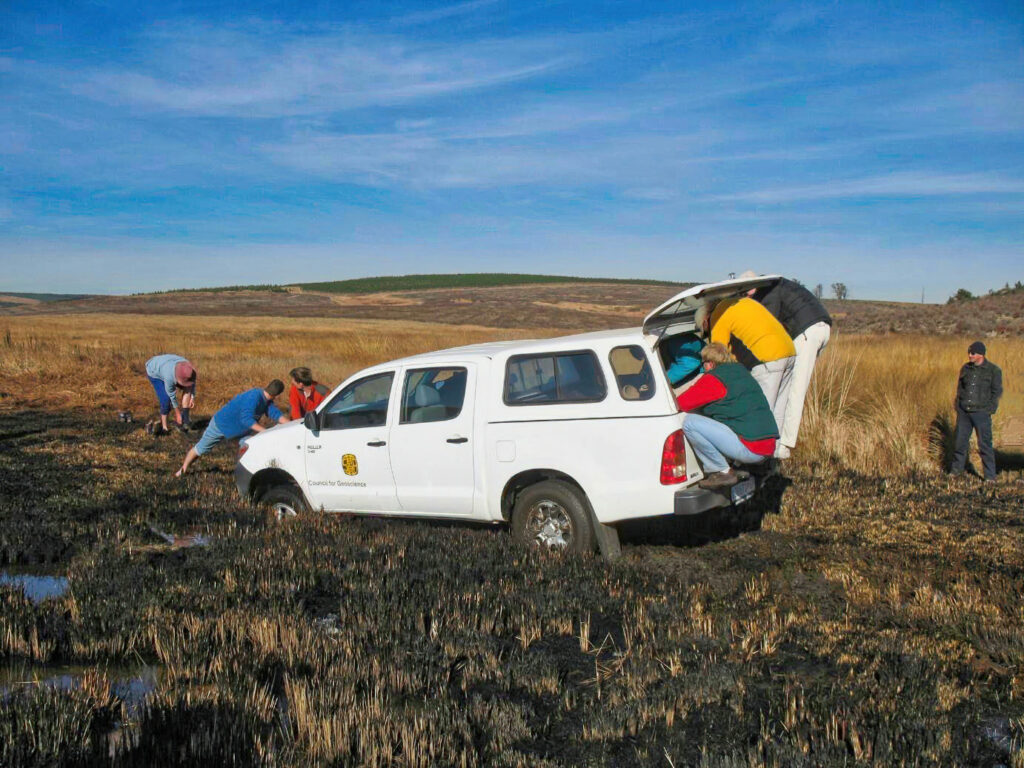
“Granites through time” became a firmly established theme, being assigned to one of the four themed sessions. One of the keynote talks (by E. Belousova) was devoted to the presentation of Hf isotope data compilations, one of the first of a kind that has become very prominent in the literature since. Of course, one of the things visible in such compilations is the presence of zircons with “juvenile” isotopic signatures, thus requiring a mantle contribution. Another significant paper that was presented there was C. Annen’s “deep hot zone” model, returning to the discussion of heat budget for the generation of granites (and how the influx of mantle melts in the crust can provide a solution). Although a number of talks dealt with aspects of magma transfer and emplacement, this was to be the last (or latest?) Hutton during which granite emplacement was discussed, as such, ending a 15 to 20 year period that had started, as far as the Hutton meetings are concerned, in Maryland. Ore deposits were also no longer on the agenda, although this subject had been an integral part of the discussion in all previous meetings: these were the years of the big slump in commodity prices.
We voted for the location of the following Hutton, of course (in Spain). However, another important vote was taken, to decide on the journal outlet for future special volumes derived from the meetings. For the 6 first symposia, the Hutton Proceedings were published in the Transactions of the Royal Society of Edinburgh, because this is where it all started. In the 2000s, however, impact factors and global visibility became key issues for most of us. So, we voted that, starting with the 2011 meeting, the special issue would be hosted by Lithos. Incidentally (and probably unrelated), the timeframe for publication started drifting away after this move. Whereas the earlier Hutton Special Issues were published within a year of the conference, in the recent ones the delay grew to more than two years.
2011: The Seventh Hutton Symposium in Avila, Spain
The Hutton went back to Europe in 2011. We met during a hot Spanish summer (4th to 9th of July). This time, the main organizer was Fernando Bea, and he and his team organized the conference in Avila, a lovely city in Castile, with cobbled streets, medieval churches and city walls, all made from (what else?) but granite blocks. The mid-conference field trip took place in the Sierra de Gredos, with an afternoon hike in alpine landscapes and amazing granitic pavements, including an unexpected encounter with a herd of ibex, on the way back. There were also a number of pre- and post-conference trips, as had by then become routine for the Hutton.
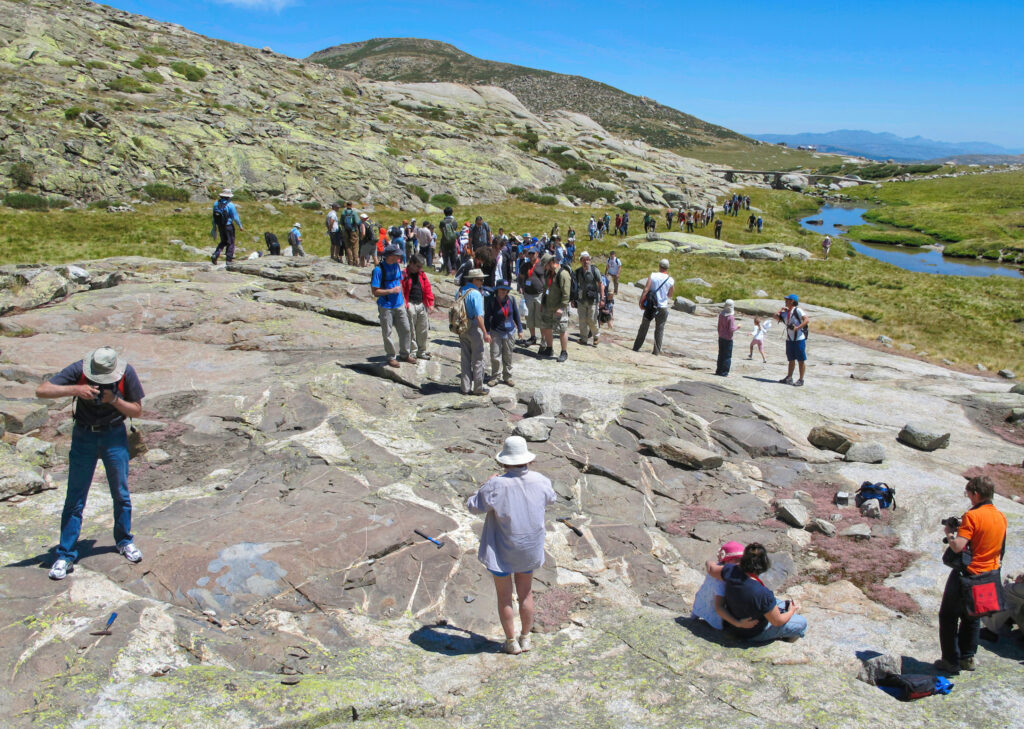
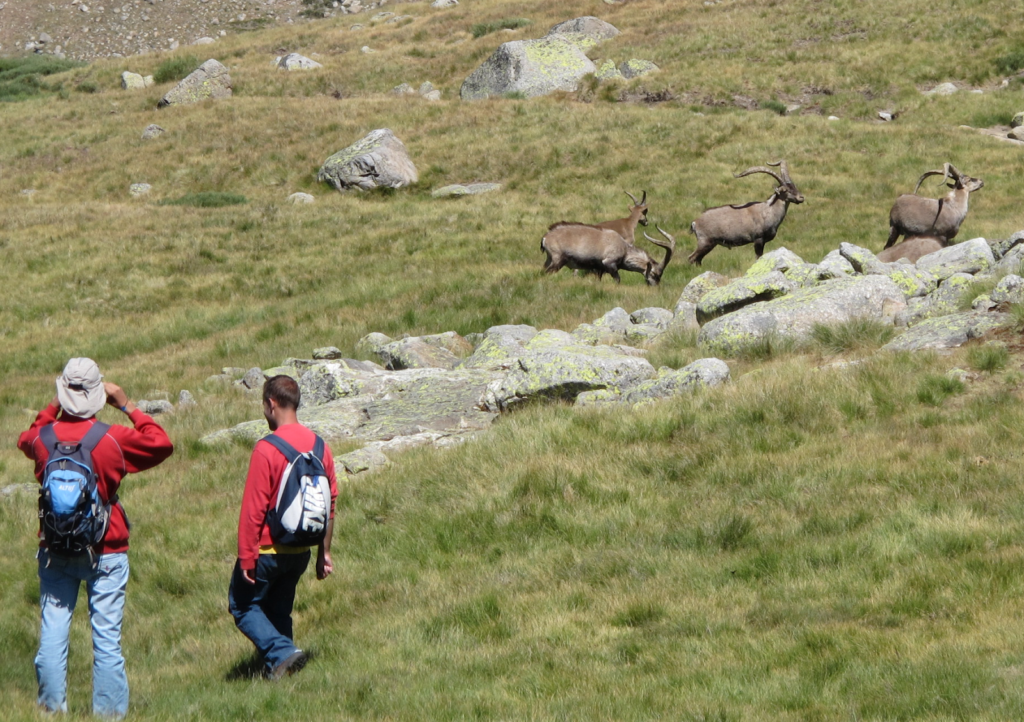
Social life in Spain, of course, is about tapas. Avila is a nice little city, full of pedestrian streets and squares. During the conference, every single one was occupied by a noisy bunch of geologists, drinking their dinner and nibbling at various Iberian delicacies – I suspect, much to the despair of our respective departmental accountants, as there was no chance of getting separate bills!
Graduating from junior to mid-career, I (JFM) was given a keynote talk … just after my (former) PhD supervisor, Hervé Martin, with whom I was also sharing a room. PowerPoint had firmly taken root by then, and with it the unhealthy habit of preparing presentations the night before. After a tapas evening, both of us were thus sitting blurry-eyed on our respective beds, trying our best to prepare our last-minute presentations and to avoid too much duplication – in which we failed abjectly, I’m afraid, and gave effectively two very similar talks back to back. Except, perhaps, for the choice of colours in the slides…
Although there still was at least one quite provocative talk (“zombie science”, indeed…), textures and structures were largely on their way out. In contrast, geochemistry (major and trace elements, but also, increasingly, Hf isotopes) was more and more central to the discussion. This year, pluton dynamics, melt transfer and so on were not much discussed, in comparison with considerations on the origin of magmas, driven in particular by advances in thermodynamic modelling. The Symposium retained the “workshop” format, with a small number of keynote speakers being given most of the time.

Alas, the mood was dampened by sad news. On his way to the Symposium, Bruce Chappell was taken ill and could not join us. He passed away in the following year, and although he was not the first member of the community to pass away, his stature was such that he left a big void in the granite-research community.
2015: The Eighth Hutton Symposium in Florianopolis, Brazil
Participants in the Avila conference were spoilt for choice – we had as many as 5 plans for the following Hutton to choose from. In the end, the vote went to Brazil, and Fatima de Bitencourt and her team organized the 2015 meeting in the seaside city of Florianopolis, Southern Brazil, from 20th to 25th of September.
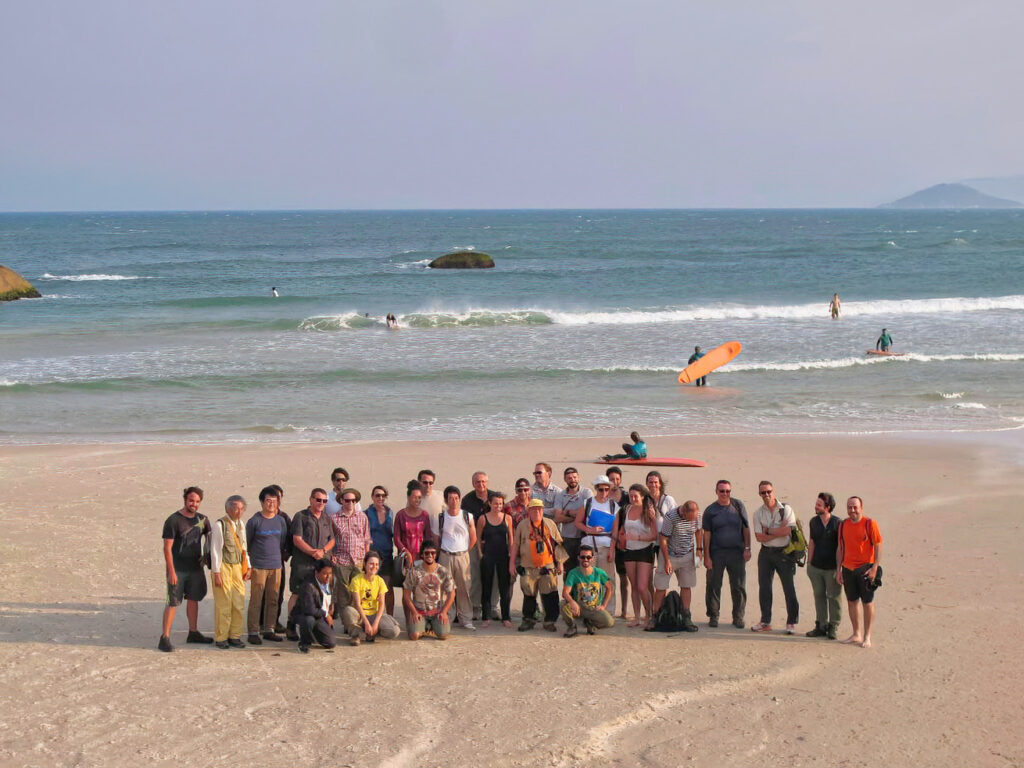
As usual, pre- and post-conference field trips were offered. Not all of them could be run, however. Economic instability in Argentina forced the cancellation of some of the planned trips, as it turned out to be impossible to propose a realistic budget. The mid-conference field trip took us to some beautiful Neoproterozoic (Panafrican on the other side of the Atlantic, Brasiliano on this side) pink granites along the coast, cut by Jurassic dykes related to the opening of the Atlantic.


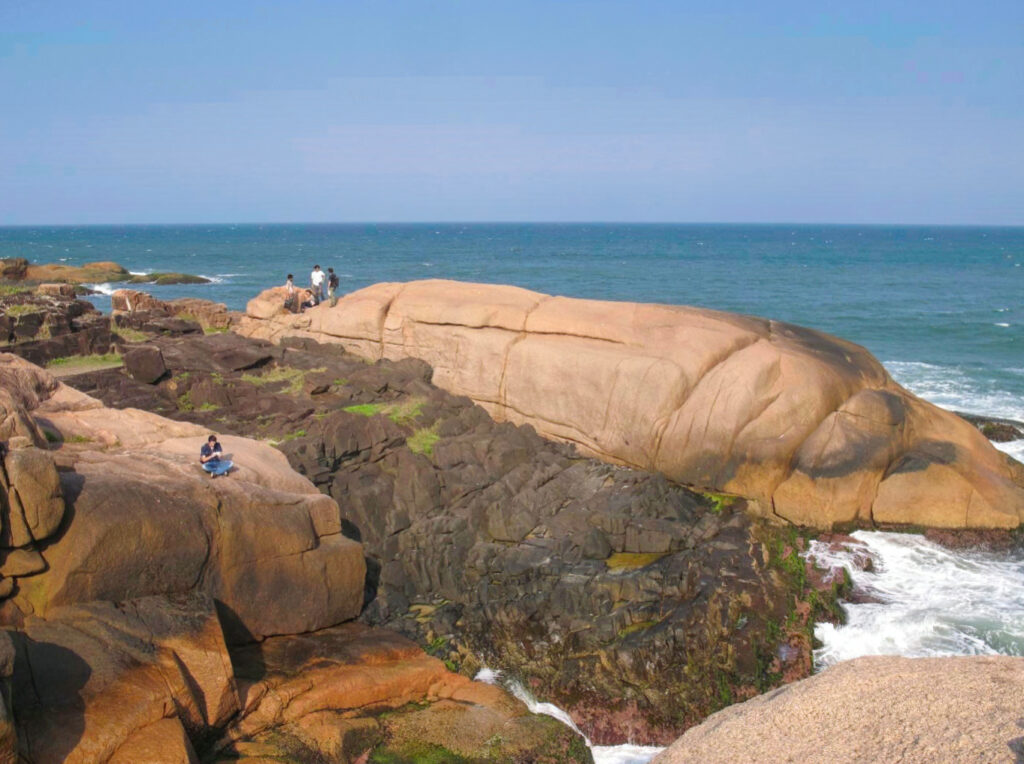
The conference retained the workshop format that was, by then, well established – a handful of themes, long keynote lectures (with a balance of ages), a young researchers’ forum and posters. Crustal evolution and the links between granites and global tectonics was a major theme. One day was spent on examining the origins of magmas, mostly partial melting processes really, and one day on shallow reservoirs and volcanic-plutonic connections. Interestingly, these two days were mirror images of each other with two sub-communities talking past each other. The crustal melting and migmatite community discussed melting, whereas the arc community discussed volcanoes and basalt fractionation.
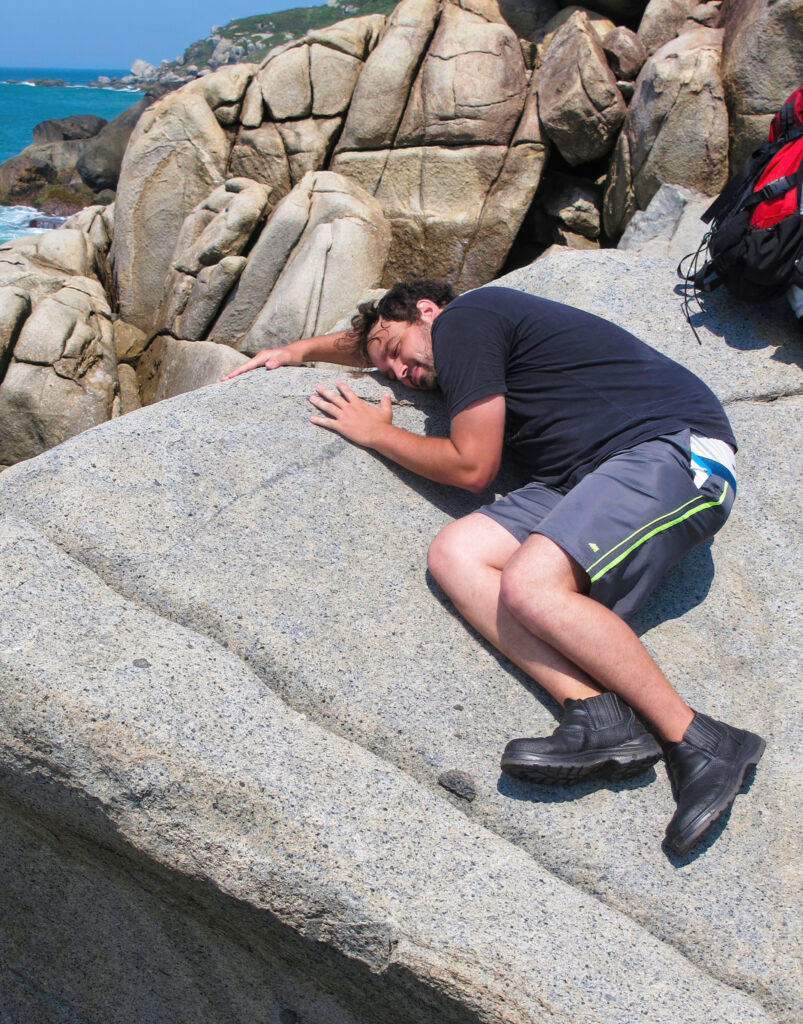
The Brazilian Hutton will perhaps be remembered as the Hf isotopes Hutton. Probably, every single talk included at least one diagram showing them – evidence of how important a tool this had become, no granite study being complete without some Hf data. On the other hand, textures and structures were almost entirely absent from the discussion.
2019: The Ninth Hutton Symposium in Nanjing, China
For many of us, the Nanjing Hutton will be remembered as the last academic thing we did before Covid… It took place between the 13th and 18th of October 2019, and we were treated as VIPs – hosted in a modern, state-of-the-art conference center, with luxury hotel and gourmet restaurant, on the brand-new campus of Nanjing University. It was organized by Y.F. Zheng, and his team, and attracted close to 300 participants again. As usual, there were pre- and post-conference field trips, and a mid-conference excursion (that was cultural as much as granitic, as Nanjing is a large city in the alluvial plain of the Yangtze River, not exactly prime granite terrain).
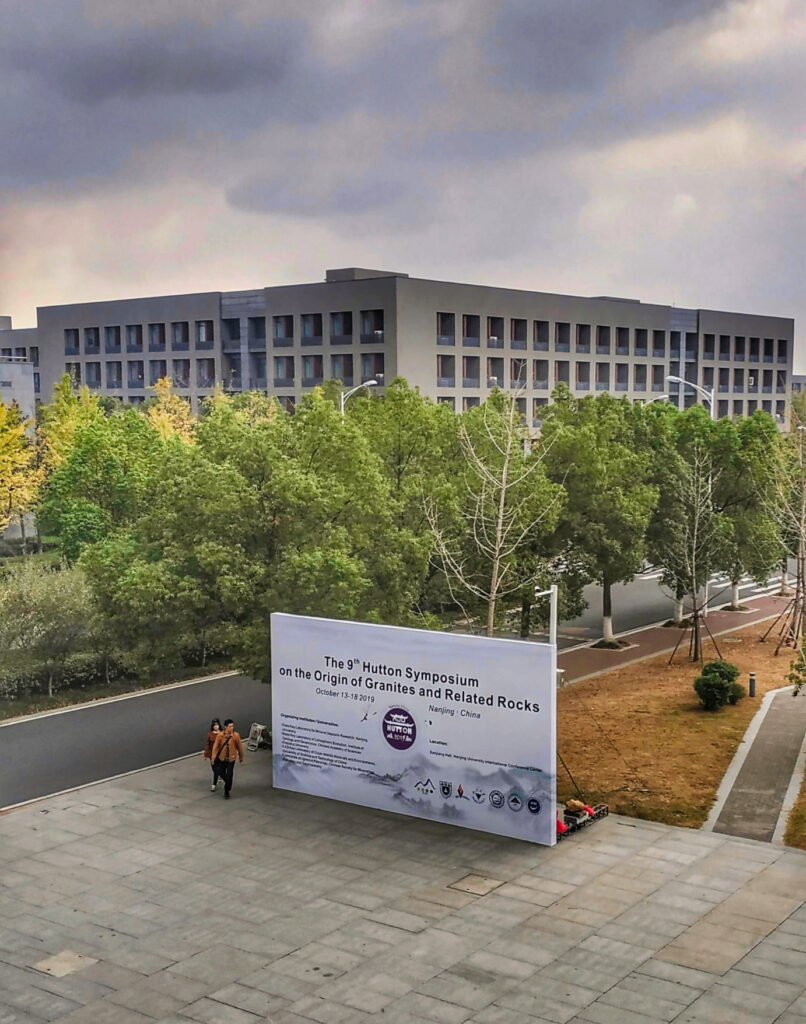
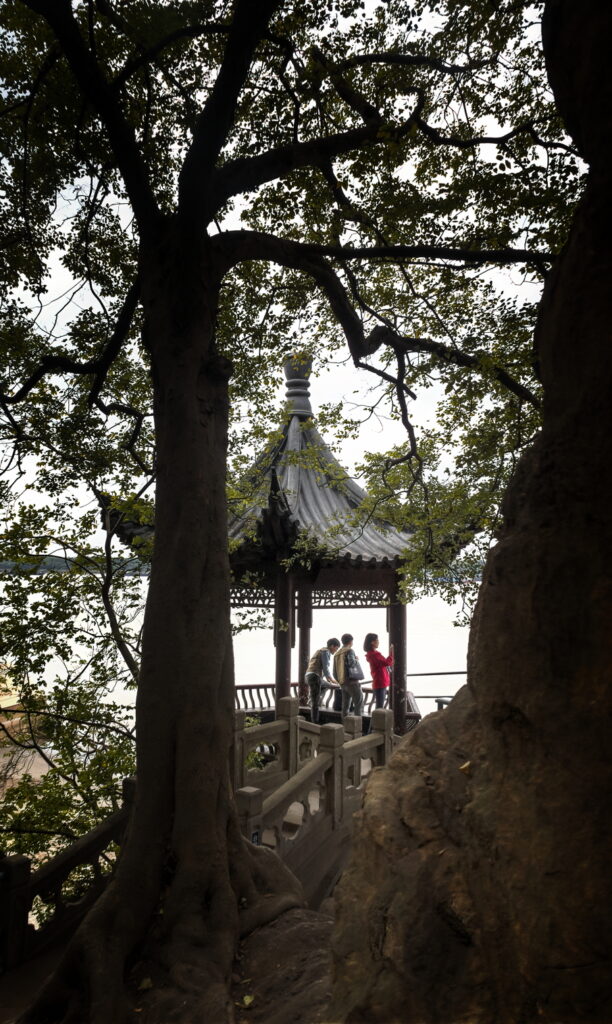

The Nanjing Hutton retained the “workshop” format – long keynotes, and posters for the majority of delegates. Speakers were mostly advanced researchers (it is frightening to realize that some of us were keynote speakers as “juniors” in the early Hutton meetings, and as “established” in the later ones!). The themes covered did not differ much from the previous Hutton in Brazil – crustal evolution, melting, volcanic-plutonic connections. On the other hand, ore deposits came back into the picture (the commodity slump of the 2000s had come and gone!). Perhaps more exotic for the international community, we heard a lot about granites from Asia – the Central Asian Orogenic Belt, as well as South-east China, both very interesting areas about which we knew very little. Although it did not figure prominently in the theme descriptions, the development of modern analytical tools formed a very strong undercurrent. Hafnium isotopes still featured heavily, but were now integrated into accessory-mineral studies, including other isotopes, trace elements and SEM studies. The so-called “non-conventional” isotopes were also discussed. Thermodynamic modelling (Thermocalc for the melting community and MELTS for the fractionators) also appeared as a de-facto standard approach for granite studies.
2023: The Tenth Hutton Symposium in Baveno, Italy
And indeed, we voted to go back to Europe. The winning bid was offered by a tri-national consortium, including Olivier Bachmann (Zürich, Switzerland); Federico Farina (Milan, Italy) and Jean-François Moyen (Saint-Etienne, France), with many others assisting us in different capacities. We decided to organize the meeting in the Southern Alps, as an international collaboration between our respective institutions and with the possibility of a mid-conference trip to the Ivrea Zone.
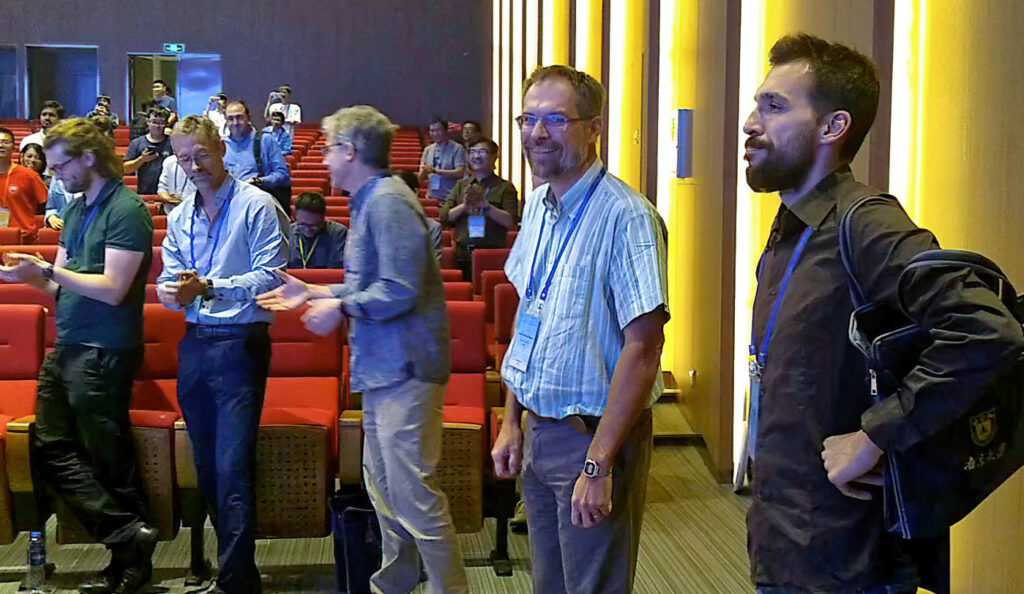

… and after?
Undoubtedly, somebody will step up at the end of the Baveno meeting, and will offer to organize the next Hutton Symposium. Which is exactly how it should be!